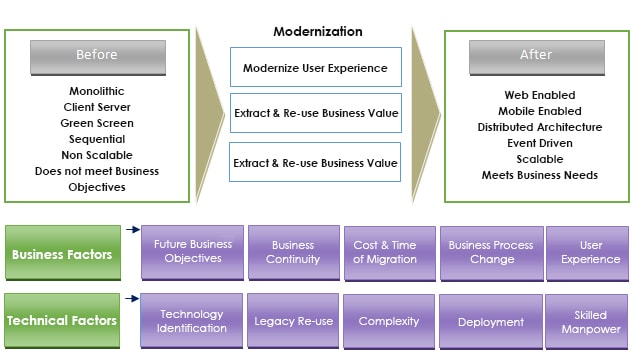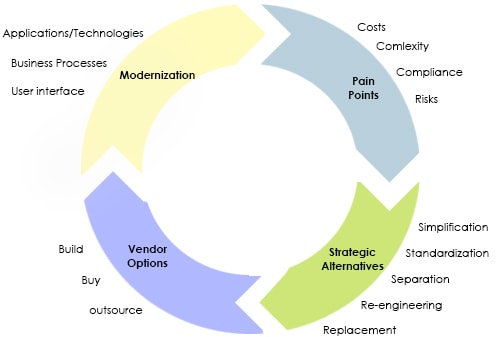August 31, 2015 By: Prabhu Jha
Progress applications have been typically developed in the era when web development and the Internet were still in their formative stages and not used extensively. Although old and monolithic, they carry useful business logic. Extracting the value of knowledge and logic embedded within these applications is not only challenging but also costly in some cases.
A well-formulated decision mechanism is therefore required to evaluate the modernization of the applications, keeping cost, time and future business objectives in perspective.
The following figure defines some of the primary reasons for modernization:

- Your app could be a monolithic, client-server one (which does not support the web), with a Character User Interface (which does not provide a good user experience).
- Your app could be sequential (where if you need to change the customer limit, you have to pass through several screens to arrive at the customer limit screen).
- Your app could be non-scalable (does not support load balancing which is a critical factor for performance if your user base increases).
- Your app is simply not able to meet your business objectives.
Let’s now see what Gartner says about Legacy Modernization:

In all these scenarios, you must consider modernization as your top priority. Your objectives to modernize may be any or several of these factors. However, once you complete your modernization journey, you will have an application that is web-enabled, mobile-enabled, event-driven, scalable and geared up to meet your changing business requirements at a fast pace.
This is particularly important as you embrace today’s disruptive technologies such as the Cloud, Mobility, Social and Big Data and Analytics. Your legacy app needs to transform into an app that leverages these technologies while retaining all the goodness that it started out with all those years ago.



